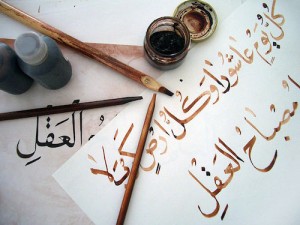Top Dialects of the Arabic Language
Arabic is a pluricentric language, which means that several different standard forms exist in various regions. In fact, different dialects of Arabic can be so distinct that speakers from each dialect can’t understand each other. With over 200 million native speakers in more than 20 different countries, Arabic has numerous dialects, each with its own unique accent and vocabulary. Here’s a list of some of the most widely-spoken ones.
1. Modern Standard
Modern Standard Arabic is the standardized variety of the Arabic language. It’s used in writing and formal speech, and is the official language of over 20 different countries. Modern Standard Arabic is also one of the six languages of the United Nations.
If you’re learning Arabic, you’re probably learning the Modern Standard dialect. However, although you’ll be able to read most Arabic-language books and newspapers, you might not be able to understand some of the other dialects on this list.
2. Egyptian
Egyptian Arabic refers to the dialect spoken by over 60 million people in Egypt. As such, it’s the most widely spoken Arabic dialect, and after Modern Standard Arabic, it’s the most widely studied dialect, as well. Though Egyptian Arabic shares most of its vocabulary with the Modern Standard dialect, its grammar and sentence structure are significantly different.
Image via Aieman Khimji / Wikipedia
3. Levantine
Spoken by some 20 million people along the eastern border of the Mediterranean Sea, Levantine Arabic is one of the major dialects of the Arabic language. Levantine Arabic has unique phonological, lexical, and grammatical features compared to other dialects of Arabic. For example, personal pronouns (e.g., “I”, “he”, “she”) can take up to twelve different forms depending on locational and social factors.
4. Sudanese
Sudan is home to nearly 20 million Arabic speakers, and it has developed its own dialect. The dialects used by different tribes in Sudan can vary considerably from one another, though Sudanese Arabic maintains some unique characteristics that differentiate it from other dialects. For instance, the letter ج, which is usually pronounced something like a “sh” in other Arabic dialects, is pronounced like a “g” in Sudanese.
How good is your Arabic? Find out by taking our free online Arabic level test!
5. Mesopotamian
Mesopotamian Arabic is an umbrella term for a continuum of Arabic dialects spoken in Iraq, Syria, Iran, and Turkey. Due to the history of multiculturalism in the region, there’s a significant degree of linguistic influence from other languages, such as Farsi and Turkish.
6. Peninsular
Like Mesopotamian Arabic, Peninsular Arabic is a general term for several varieties of the language. Peninsular Arabic is spoken in the Arabian Peninsula, in countries such as Saudi Arabia, Yemen, and the United Arab Emirates.
7. Maghrebi
The variety of Arabic spoken in the Maghreb (a region in Northwest Africa) is spoken in countries such as Algeria and Morocco. Given the history of European colonization in these regions, there are several loanwords from Romance languages. For example, the variety spoken in Morocco features several borrowings from Spanish, whereas the variety spoken in Algeria is influenced by French.
As mentioned before, Modern Standard Arabic is the written standard of the language, and is used throughout the Arabic-speaking world in print. The other dialects on this list, then, are primarily spoken, rather than written, dialects. Given the stark dialectical differences in the language, it’s crucial that you take tailor-made courses from a native Arabic speaker who can explain these important regional differences. Contact us to learn more about how we can help you improve your Arabic skills.



